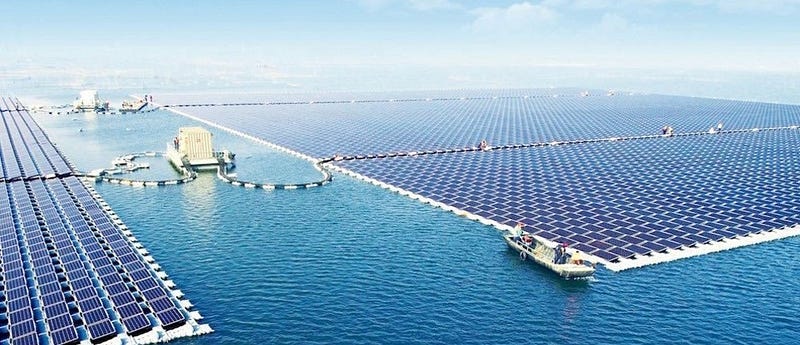 |
| The 40MW floating solar power plant at Huainan, China, is the world’s largest. Image: Sungrow Power Supply |
It wasn’t too long ago that China had a reputation as a coal-guzzling, smog-blanketed polluter. But that is changing — and fast.
Today, China invests more each year in wind, hydro and solar power than any other country on earth. This week it further underlined its role as the global leader in renewable energy by switching on the world’s largest floating solar power plant.
The facility is located in the city of Huainan, in China’s eastern Anhui province. It has a capacity of 40 megawatts (MW), enough to power a small town. And in a stroke of pleasing symbolism, the plant floats over a flooded former coal-mining region.
Floating solar arrays have been in use for a little over a decade. They have several advantages; they don’t take up any valuable space on land, and the cooling effect of the water on which the panels float makes them more efficient. They can also help to mitigate the evaporation of water for drinking or irrigation by intercepting sunlight before it hits a reservoir’s surface.
But while the technology is well-established, the Huainan plant represents a giant step forwards in scale. Previously, the largest floating solar array was a 6.3MW plant located in the UK. That will be overshadowed by a plant in Japan, due to come online next year, that will produce 13.7MW — still a long way behind China’s new facility.
As well as accelerating its investment in renewables, China has also been putting the brakes on its fossil fuel consumption. In January this year, the country’s energy regulator brought a stop to more than 100 coal-fired power plants under construction across the country, with a combined output of 100 gigawatts (GW).
China’s renewable energy trajectory can be viewed in counterpoint to that of the US. Last night, President Donald Trump fulfilled a promise he made on his election campaign: to withdraw from the 2015 Paris Climate Agreement.
In response, China and the EU have issued a joint statement reaffirming their commitment to the Paris Agreement and announcing their intention to ramp up efforts on reducing global carbon emissions. Without the US in the accord, it will leave a superpower-shaped hole in global climate-change leadership — one that China seems willing and able to fill.
Originally published at www.weforum.org
No comments:
Post a Comment